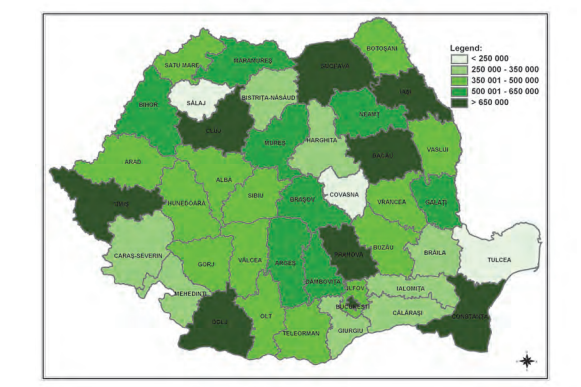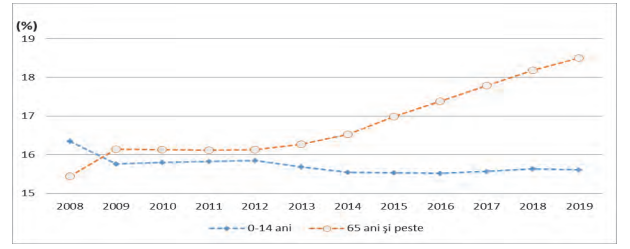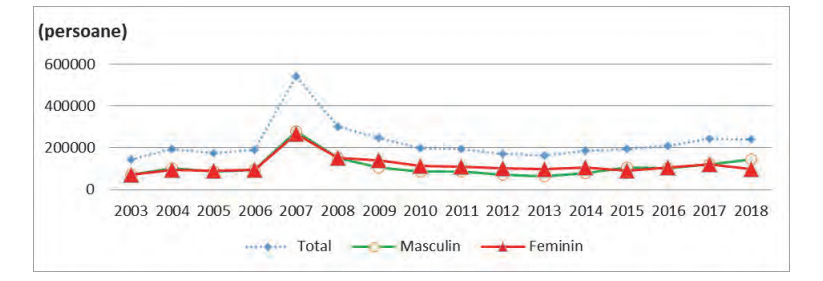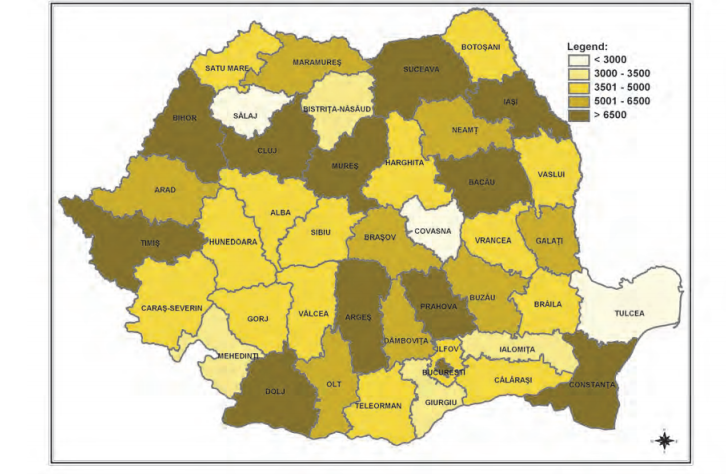Romania’s population is aging, and the number of youngsters and employees is decreasing, while the number of pensioners is increasing. In January 2019, the country’s population was 22.2 million, but the number of people actually living in Romania was significantly lower: only 19.4 million. According to a report from the National Institute of Statistics, between 2002 and 2011, the number of people residing in Romania decreased by 1.6 million.
It would appear Romania Can’t Keep People in Romania. In the last few years, the proportion of men in the population has also decreased. In the 2000s, the male-to-female ratio was 96 men to every 100 woman, but last year it fell back to 95 men per 100 women. However, the proportion of men in the population under 50 is higher than the proportion of women.

According to the registered residential addresses, 56.4 percent of the population lives in cities, a 1.4 percent increase since the millennium.
The density of the population changes from county to county. Almost a tenth of the population lives in the capital of Bucharest (9.6 percent), followed by Iași County (4.3 percent) and Prahova County (3.6 percent). The least populated county is Kovászna/Covasna, where only 1 percent of the inhabitants lives. The most densely populated areas are the municipality of Bucharest and Ialomița, Iași and Prahova Counties, while the least densely populated area is Hargita/Hargita County. Hargita and Kovászna counties are part of Szeklerland, the region mostly inhabited by Hungarians.
Romanian society is aging as well. The proportion of those over 65 is 18.5 percent – 15.3 percent of the entire male population and 21.6 percent of the female population. In contrast, young people (0 to 14 years old) make up only 15.6 percent – 16.4 percent of the men and 14.9 percent of women.

But aging is not the only challenge Romania faces: migration to wealthier Western countries is also causing a big problem. According to a UN International Migration Report, around 3.5 million Romanians have moved abroad between 2007 and 2015 to escape poverty and widespread corruption in their country. Globally, Romania ranked second for its emigration growth rate between 2007 and 2015, right after Syria.

The data of the Romanian Statistical Institute shows that the number of people leaving the country has changed every year between 2003 and 2018. It was the highest in 2007, the year of accession to the European Union, when 544,100 Romanian citizens moved to another country, three times more than in 2006. But the following years, emigration experienced a decline, bottoming out in 2013 when only 162,000 people left the country.
Between 2009 and 2013, the number of women emigrating was higher than the number of men. But since 2013, this has changed, and in 2017, the share of men leaving Romania was 59.6 percent. The most populous regions have been affected the most by emigration: the capital, along with Prahova, Iași, Constanța, Temes/Timiș, Kolozs/Cluj and Dolj Counties.

The future doesn’t look any brighter either. According to experts, Romania’s population will fall to 17.4 million by 2040, and to 15.9 million by 2060. At the end of the century, only 13.3 million people will live in the country. But not only Romania’s population is decreasing: Around the year 3000, the population of the EU will be 492 million versus 513 million today.
Update: Romanian population ageing accelerating – Eurostat
Title image: In 2007, 544,100 Romanian citizens moved to another country. Photo: www.stirilekanald.ro